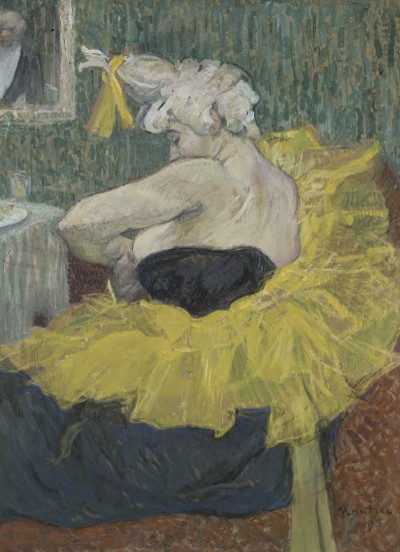The Clown Cha u Kao at the Moulin Rouge was produced by Henri Toulouse-Lautrec in 1895 and he would paint this figure many times. This piece is now a part of the collection of the Musée d'Orsay in Paris, France.
The artist spent many years within this flamboyant community in a small part of Paris. It was here that many creatives would gather, building an inspiring atmosphere which they could all feed from. Toulouse-Lautrec loved the cabaret clubs who accepted him when other parts of French society would not, because of his physical appearance. He felt at home and wanted to capture scene from these shows within his work. Clown Cha u Kao would appear many times across the late 19th century within his work. Another piece was known as The Clownesse Cha-u-Kao at the Moulin Rouge and he often used much the same title across related artworks, making it hard to differentiate between them. He was a prolific painter, releasing over a thousand artworks by the end of his career, in a variety of mediums.
In this composition, the clown appears to be taking a hard earned rest, perhaps preparing for the next show. It is therefore a personal, intimate depiction which was possible because of how the artist himself became friendly with so many of the cabaret acts. The clown features a dominant stripe of yellow, wrapping her body, alongside a black dress. Her hair is glamorously rolled, with a yellow flourish hanging from the very top. She appears sat down, adjusting her outfit in front of a small table and mirror. This is a moment of peace, where the drama and action is paused, allowing us to see the individual themselves without the normal pretence. The detail of this painting is not entirely precise, displaying the impact of Impressionism upon Toulouse Lautrec. He took elements of influence from others, but was still able to generate a truly unique body of work.
Posters would form an important part of promotion for theatres at that time, and Toulouse Lautrec was well placed to take advantage of that. Other great illustrators would also be involved in this for short periods, taking the opportunity to generate strong income before then returning to other artistic interests. Toulouse Lautrec had the advantage of being well known within theatre circles and therefore could bring his own knowledge into some of his illustrations. He did seem most interested in the personalities involved, and would paint the different figures whilst t work or at rest. He was a sensitive man who enjoyed seeing the subtleties of someone's character, and then capturing it visually on paper or canvas.




